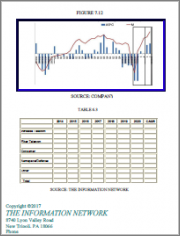
|
시장보고서
상품코드
1483209
반도체 공장 자동화 : 기술 문제 및 시장 예측Semiconductor Factory Automation: Technology Issues and Market Forecasts |
||||||
소개
반도체 산업은 빠른 기술 발전과 더 높은 효율성과 정확성을 끊임없이 추구하는 것이 특징입니다. 공장 자동화(공장 자동화)는 이러한 목표를 달성하는 데 중요한 역할을 하고 있으며, 진공 로봇, 대기 로봇, 자동 자재 취급 시스템(AMHS), 제조 실행 시스템(MES)과 같은 기술이 이러한 변화의 최전선에 있습니다.
이 보고서는 반도체 제조 공장의 주요 자동화 기술에 대해 자세히 분석하고, 반도체 제조 공정에 미치는 영향, 새로운 트렌드, 전략적 과제에 대해 고찰했습니다. 또한, 반도체 공장의 자동화 도입 촉진요인에 대한 종합적인 조사와 함께 향후 투자 및 개발의 지침이 될 수 있는 전략적 예측을 제공합니다.
반도체 공장 자동화 기술 동향
반도체 제조의 고도의 자동화 기술 통합은 더 높은 처리량, 더 낮은 불량률, 더 높은 운영 효율성에 대한 요구로 인해 업계를 재편하고 있습니다. 진공 로봇과 대기 로봇은 이러한 자동화에 필수적인 구성 요소입니다. 진공 로봇은 반도체 웨이퍼 처리 챔버의 전형적인 고진공 환경에서 작동하도록 특별히 설계되었습니다. 이 로봇은 섬세한 웨이퍼를 매우 정밀하게 다루며 오염과 물리적 손상을 최소화합니다. 진공 로봇 기술의 발전은 반도체 제조에서 높은 수율을 유지하는 데 필수적인 속도, 정확성 및 신뢰성 향상에 초점을 맞추었습니다.
대기로봇은 대기 환경에서 작동하며, 서로 다른 공정 스테이션 간 웨이퍼 이송에 널리 사용되고 있습니다. 이 로봇은 클린룸에서 웨이퍼를 취급하도록 설계되어 반도체 제조의 엄격한 청정도 요건을 충족할 수 있습니다. 더욱 컴팩트하고 민첩한 대기 로봇에 대한 추세는 점점 더 혼잡해지는 공장 환경에서 공간을 최대한 활용해야 할 필요성에 의해 생겨났습니다. 진공 로봇과 대기 로봇 모두 성능과 적응성을 최적화하기 위해 첨단 센서와 AI 알고리즘을 통합하여 더욱 정교해지고 있습니다.
자동 자재 취급 시스템(AMHS)은 반도체 공장 자동화의 또 다른 중요한 기술로서, 웨이퍼, 레티클, 소모품 등의 자재를 공장 전체에 걸쳐 효율적으로 이동시키는 역할을 합니다. 이러한 시스템에는 오버헤드 호이스트 이송(OHT) 및 자동 운반 차량(AGV)과 같은 다양한 자동 이송 메커니즘이 포함되어 다양한 처리 스테이션으로 자재를 적시에 정확하게 이송할 수 있도록 보장합니다. 알고리즘을 통합하여 역동적인 제조 환경에 적응하고 병목현상을 줄일 수 있는 능력을 강화하는 등 AMHS의 발전이 더욱 뚜렷해지고 있습니다.
제조 실행 시스템(MES)은 반도체 공장의 복잡한 공정을 구성하는 데 중요한 역할을 하며, 생산 활동을 실시간으로 모니터링하고 제어하여 제조 작업이 사전에 정의된 사양 및 품질 표준을 준수하도록 보장합니다. 이러한 시스템은 다양한 장비와 공정에서 방대한 양의 데이터를 수집하고 분석하여 사전 예방적 의사결정과 지속적인 개선을 가능하게 합니다. 보다 진보된 MES 솔루션의 추세는 빅데이터 분석과 머신러닝을 도입하여 잠재적인 문제를 예측하고 예방할 수 있는 시스템의 역량을 강화함으로써 공장 전체의 성과를 향상시키는 것이 특징입니다.
목차
제1장 서론
제2장 주요 요약
제3장 촉진요인
- Chips Act : 미국 및 세계
- 200/300mm 웨이퍼 트렌드
- 칩 선폭 동향
- 처리 툴 동향
- 자동 웨이퍼 처리의 장점
제4장 소프트웨어
- 서론
- CIM 진화
- 산업 MES
- MES의 기능
- MES와 ERP의 통합
- MES 제품
제5장 하드웨어
- 서론
- 자동화 요소
- 툴 자동화
- Intrabay Automation
- Interbay Automation
- 통합형 운송 시스템
- 유연한 자동화
- 신뢰성
- 툴 문제와 동향
- 유연한 툴 인터페이스
- 진공 로봇
- 무인운반차
- 로봇 제어 시스템
- 300mm 웨이퍼 반송
- Mini-Environments 및 클린룸 문제
제6장 시장 분석
- 시장 변동 요인
- 시장 예측
- 자동 반송 툴 시장
- 캐리어 운송 시장
- MES 소프트웨어 시장
제7장 사용자 문제
- 현재 자동화 생각
- 새로운 공장 패러다임
- 새로운 공장 가동
- 투자수익률 고려
- 낡은 패러다임의 8개 증상
- 새로운 패러다임 실천
Introduction
The semiconductor industry is characterized by its rapid technological advancements and the constant pursuit of higher efficiency and precision. Factory automation plays a critical role in achieving these goals, with technologies such as vacuum and atmospheric robots, Automated Material Handling Systems (AMHS), and Manufacturing Execution Systems (MES) at the forefront of this transformation. Our report, "Semiconductor Factory Automation: Technology Issues and Market Forecasts," provides an in-depth analysis of these crucial automation technologies, examining their impact on the semiconductor manufacturing process, emerging trends, and strategic challenges. This report is tailored for industry professionals seeking comprehensive insights into the factors driving the adoption of automation in semiconductor factories and offering strategic forecasts to guide future investments and development.
Trends in Semiconductor Factory Automation Technology
The integration of advanced automation technologies in semiconductor manufacturing is reshaping the industry, driven by the need for higher throughput, lower defect rates, and greater operational efficiency. Vacuum and atmospheric robots are essential components of this automation landscape. Vacuum robots are specifically designed to operate in high-vacuum environments typical of semiconductor wafer processing chambers. These robots handle delicate wafers with extreme precision, minimizing contamination and physical damage. Advances in vacuum robot technology are focused on enhancing their speed, accuracy, and reliability, which are critical for maintaining high yield rates in semiconductor fabrication.
Atmospheric robots, on the other hand, operate in ambient environments and are used extensively for wafer transport between different processing stations. These robots are designed to handle wafers in cleanroom conditions, ensuring that the stringent cleanliness requirements of semiconductor manufacturing are met. The trend towards more compact and agile atmospheric robots is driven by the need to maximize space utilization in increasingly crowded fab environments. Both vacuum and atmospheric robots are becoming more sophisticated, incorporating advanced sensors and AI algorithms to optimize their performance and adaptability.
Automated Material Handling Systems (AMHS) are another pivotal technology in semiconductor factory automation. AMHS are responsible for the efficient movement of materials, such as wafers, reticles, and consumables, throughout the fab. These systems include a range of automated transport mechanisms, such as overhead hoist transport (OHT) and automated guided vehicles (AGVs), which ensure timely and accurate delivery of materials to various processing stations. The evolution of AMHS is marked by the integration of more intelligent routing and scheduling algorithms, which enhance their ability to adapt to dynamic manufacturing environments and reduce bottlenecks.
Manufacturing Execution Systems (MES) play a crucial role in orchestrating the complex processes within semiconductor fabs. MES provide real-time monitoring and control of production activities, ensuring that manufacturing operations adhere to predefined specifications and quality standards. These systems collect and analyze vast amounts of data from various equipment and processes, enabling proactive decision-making and continuous improvement. The trend towards more advanced MES solutions is characterized by the incorporation of big data analytics and machine learning, which enhance the ability of these systems to predict and prevent potential issues, thereby improving overall fab performance.
The Need to Purchase This Report
For businesses and professionals involved in the semiconductor industry, understanding the latest advancements and trends in factory automation is essential for maintaining a competitive edge. This report provides a detailed analysis of the technological issues, market drivers, and challenges associated with vacuum and atmospheric robots, AMHS, and MES. By purchasing this report, stakeholders will gain valuable insights into the factors influencing the adoption and implementation of these automation technologies, enabling them to make informed strategic decisions and capitalize on emerging opportunities.
Our report offers strategic recommendations for leveraging automation technologies to enhance manufacturing efficiency, reduce costs, and improve product quality. It includes comprehensive market forecasts, competitive landscape assessments, and an in-depth examination of the key players driving innovation in semiconductor factory automation. Companies looking to invest in or expand their automation capabilities will find this report indispensable for identifying growth opportunities and understanding the competitive dynamics of the market.
In conclusion, "Semiconductor Factory Automation: Technology Issues and Market Forecasts" is an essential resource for industry professionals, engineers, researchers, and business leaders. It provides a thorough exploration of the technological trends and market dynamics shaping the automation of semiconductor fabs, equipping readers with the knowledge necessary to navigate the complexities of this field and capitalize on its potential. This report is designed to inform strategic planning, investment decisions, and the development of innovative automation solutions that will drive future success in the semiconductor industry.
Table of Contents
Chapter 1. Introduction
Chapter 2. Executive Summary
- 2.1. Summary of Major Issues
- 2.2. Summary of Market Forecasts
Chapter 3. Driving Forces
- 3.1. Chips Act-U.S. and Global
- 3.2. Trend to 200/300mm Wafers
- 3.2. Trends In Chip Linewidths
- 3.4. Trends in Processing Tools
- 3.5. Benefits of Automated Wafer Handling
Chapter 4. Software
- 4.1. Introduction
- 4.2. The Evolution of CIM
- 4.3. MES in Industry
- 4.3.1. MES Functionalities
- 4.3.1. MES and ERP Integration
- 4.3.2. MES Products
Chapter 5. Hardware
- 5.1. Introduction
- 5.2. Elements of Automation
- 5.2.1. Tool Automation
- 5.2.2. Intrabay Automation
- 5.2.3. Interbay Automation
- 5.2.4. Unified Transport System
- 5.3. Flexible Automation
- 5.4. Reliability
- 5.5. Tool Issues and Trends
- 5.5.1. Flexible Tool Interface
- 5.5.2. Vacuum Robotics
- 5.5.3. AGV
- 5.5.4. Robot Control Systems
- 5.5.5. 300mm Wafer Transport
- 5.5.6. Mini-Environments and Cleanroom Issues
Chapter 6. Market Analysis
- 6.1. Market Forces
- 6.2. Market Forecast
- 6.2.1. Automated Transfer Tool Market
- 6.2.2. Carrier Transport Market
- 6.2.3. MES Software Market
Chapter 7. User Issues
- 7.1. Current Automation Thinking
- 7.2. The New Factory Paradigm
- 7.3. The New Factory in Action
- 7.4. Return on Investment Considerations
- 7.5. Eight Symptoms of the Old Paradigm
- 7.6. Putting the New Paradigm to Work



















